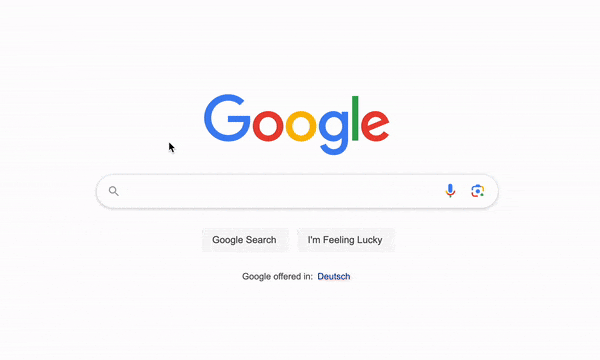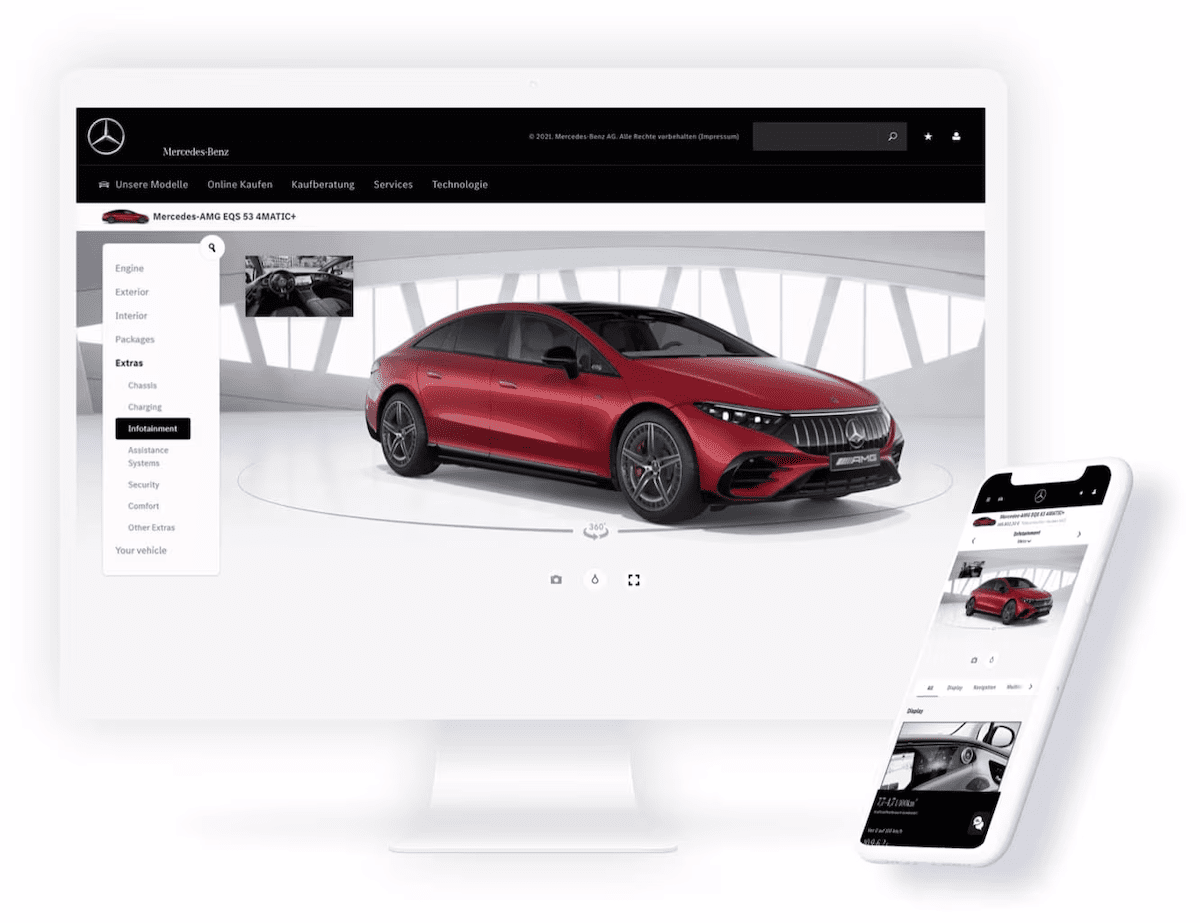Hi there! Welcome to the fifth and final tutorial of your Product Design Short Course 🥳
We're almost at the end! We hope you’ve enjoyed learning all about the field and what a product designer does. For the last leg of our journey, we’ll consider why product design is such an attractive career path—and share some advice for getting started 🤩
We’ll cover:
- Why become a product designer?
- Where could a career in product design take you?
- How to become a product designer
- Wrapping up and next steps
Ready for the grand finale? Let’s do this!
1. Why become a product designer?
There are many compelling reasons to consider a career in product design. The work is varied and interesting, the job market’s stable, and the pay tends to be above average. In simple terms, this is one very attractive career path 😍
But don’t just take our word for it. Let’s take a closer look at the industry and objectively consider the perks of a career in product design.
The product design industry is growing—and product designers are in demand 📈
Back in Tutorial 1, we mentioned that the product design and development services market is growing significantly. In 2022, it was valued at $9.4 billion. Now, from 2023-2030, it’s expected to see a compound annual growth rate (CAGR) of 12.5%—reaching an estimated $24.1 billion by 2030.
The demand for product designers is also growing. According to Zippia, product designer jobs are projected to increase at a 3% growth rate from 2018-2028.
At the same time, the scope of the role is evolving and expanding. With the rapid rise of emerging technologies—think AI, machine learning, next-generation software, immersive reality technology, and Web3—there’s an ever greater need for designers who can ensure that these new technologies (and their related products) are accessible and useful for humans. Cue product designers!
Indeed, McKinsey reports that job postings in fields related to emerging tech trends grew at a “very healthy” 15% between 2021 and 2022, even though global job postings overall decreased by 13%. The report also notes that “there’s a wide gap between the demand for people with the skills needed to capture value from the tech trends and available talent.”
Cutting-edge technology aside, businesses and brands are increasingly recognizing the importance of user-centered design. Anyone who wants to compete in a particular market and build a loyal customer base must be able to meet their users’ needs. As we know, product designers are critical here—hence the growing demand for their skills.
Ultimately, product designers can anticipate a thriving, evolving industry and a burgeoning job market.
Product design is a creative, varied, and impactful career 🌍
Throughout this course, we’ve explored the many different aspects of a product designer’s work—from engaging with target users through extensive research, to evaluating the market with a strategic eye; from creative brainstorming to practical design work; from analyzing behavioral data to collaborating with business stakeholders.
Product design is an extremely varied career path. It blends strategy, critical thinking, and creativity. It spans technology, business, and human empathy. Product designers enjoy great variety in their work (which, we’ve heard, is the spice of life 🌶️) and have the opportunity to make an impact.
They shape the products and experiences that define our everyday lives—whether that’s an online dating app, a medical device, a coffee machine, or something else entirely. Product designers get to bring their ideas to life and see them make a difference in the real world. Now that’s a pretty rewarding job to have!
Product designer salaries are comparatively high 💰
That’s all well and good—but what about money? Salary is of course a driving factor when choosing a career path, and we’re happy to report that product designer salaries stack up rather well. Here’s the average product designer salary in various locations (correct at the time of writing):
- Germany: €66,612 per year (SalaryExpert)
- United Kingdom: £55,000 per year (Talent.com)
- United States: $120,000 per year (Indeed)
- Canada: $87,973 per year (Glassdoor)
- Australia: $112,575 per year (Indeed)
If you’d like to check the average product designer salary for a different location, use sites like Indeed, Glassdoor, and Salary Expert—or type “average product designer salary in [location]” into Google 🤑

2. Where could a career in product design take you?
The product design skillset is incredibly varied—and product design expertise is required practically everywhere. So where might a career in product design take you? 🤔 Let’s explore:
- Where product designers work
- What kind of career progression product designers can expect
- Additional product design roles and job titles
Where do product designers work? 💼
When you think of a product designer, you might automatically think “tech startup.” And, while many product designers do work in tech startups and tech companies, that’s not the only place you’ll find them! They’re also hired by large corporations, government agencies, non-profit organizations, academic and cultural institutions, architectural firms, manufacturing companies, and more.
As for sectors and industries, product designers can work in tech, government, healthcare, automotive, gaming, beauty, electronics, finance…the list goes on. Any company or sector that delivers a user-facing product or service needs a product designer 💪
Just look at CareerFoundry graduate Susana, who was hired as a product designer at Mercedes-Benz.io where she’s designing digital services and user interfaces (like online customization tools for customers buying a new car!) Pretty cool, right?!

Image: Mercedes-Benz.io
And remember: product designers don’t focus exclusively on digital products. Depending on the industry, they might also work on physical products. Think games consoles, headphones, bike helmets, vacuum cleaners, toys, pet collars…if it can be used or interacted with in some way, it’s within the product designer’s remit.
What kind of career progression can product designers expect? 🚀
Your career trajectory as a product designer will depend on multiple factors; there’s no one-size-fits-all pathway.
If you’re entering the field as a novice with limited professional experience, you can expect to start out as a junior product designer. But, if you already have experience in another industry, you may be able to move into a product design role within your current field—minus the junior title.
As you gain more experience and seniority, you can become a senior product designer, a product design lead, a design director and, eventually, chief design officer (CDO). Perhaps you’ll end up as a product design consultant, enjoying the freelance life!
It’s also a career that often promises the adaptability of remote or hybrid work, giving you a more flexible approach to work and an improved work-life balance.
You can shape your product design career path based on your unique strengths, goals, and interests. That’s the joy of working in such a varied and versatile field!
What other roles and job titles can product designers get? 🤠
Speaking of varied: "product designer" isn’t the only job title available. Once you’ve acquired fundamental product design skills, the door is open to a whole host of interesting roles and pathways. Some will require additional specialist skills; others, you may move into organically as you gain experience in a particular niche.
Here are some additional roles and job titles that require product design skills:
- User experience (UX) designer
- User interface (UI) designer
- Industrial designer
- Packaging designer
- Game designer
- Environmental designer
- 3D modeler
You can search any of these job titles on platforms like Indeed to see what each role entails, how they incorporate product design, and what additional skills and know-how they require. This will give you a good sense of just how far and wide your product design skills could take you! 🚀
3. How to become a product designer
If you’re brand new to product design, here are the steps you’ll need to go through to get job-ready:
- Learn the essential product design hard skills, and get familiar with product design tools and software (refer back to Tutorials 2 and 4 if you need a refresher!)
- Apply your new skills to practical projects and develop a professional product design portfolio
- Grow your product design network to learn more about the field and build meaningful industry connections
- Learn how to market yourself as a product designer and highlight your transferable skills and value—regardless of your professional background
- Get to grips with the product design hiring process and learn how to ace product design interviews
But don't worry, you don't have to go it alone! 😵 If you like the sound of a career in product design there are plenty of courses (both online and in-person) to help guide you through the learning process.
Consider a professional career-change program like the CareerFoundry Product Design Program. It’ll take you from beginner to job-ready in less than 10 months. No need to devise your own learning path: with a cutting-edge curriculum and practical projects, you’ll learn all the essential concepts, in-demand skills, and tools you need to work in the field.
Learn online, at your own pace, and with the support of a mentor and tutor. They'll give you feedback on your work and help you create your own product design portfolio. You'll also work with a career specialist as you prepare to launch a career in product design. They'll help you land your first job after graduation. CareerFoundry even offers a job guarantee; if you don’t get a job within six months of graduation, you’ll get your money back 💙
If you’d like to learn how CareerFoundry students have gone on to exciting new careers in design, development, and other tech roles, check out our Graduate Outcomes page.
4. Wrapping up and next steps
We’re almost at the end of Tutorial 5—and of our Product Design Short Course 🥹 So what now?
- Keep learning and exploring 📚 If you’ve enjoyed this introduction to product design, we encourage you to continue exploring the field. Check out the CareerFoundry blog for regular industry insights and career-change tips.
- Learn more about the CareerFoundry Product Design Program 🧑🎓 Read through the course brochure to learn all about the product design curriculum—and what it’s like to study and launch a new career with CareerFoundry.
- Schedule a no-strings call with an expert program advisor ☎️ They can answer any questions you might have about the Product Design Program, about CareerFoundry, and about career-change in general—and help you figure out if it’s the right option for you.
It’s a wrap!
We’ve officially reached the end of our Product Design Short Course 🎉 Thanks for sticking with us all the way through—we hope it’s been an enjoyable and insightful journey! For now it’s farewell, but we hope to see you again soon 🫶 And, as always, don’t forget to take the short quiz before you go!
You'll also get the chance to take our Final Quiz after this tutorial. Get 70% or more and you’ll be awarded a discount on our Product Design Program. Good luck!
